
When gold was discovered in 1848 near San Francisco, it sparked the California Gold Rush. Thousands poured into the village formerly named Yerba Buena and it exploded into the city of San Francisco almost overnight. Those thousands included former and escaped convicts from the British penal colonies in Australia, dubbed ‘Sydney Ducks,’ and their activities labeled everyone arriving from Australia as felonious.
Between 1849 and 1851, San Francisco suffered seven huge city fires. The majority were caused by arson and this prompted the formation of a Vigilante Committee in 1851. The Vigilantes publicly hanged the first four white men executed in San Francisco, all were Sydney Ducks.
The California Gold Rush brings Sydney Ducks to San Francisco

It was much cheaper and faster, between 90 to 110 days, to sail from Sydney to San Francisco than to get there from the East Coast of the USA. That was an arduous journey that would take over 6 months. The first ship from the Eastern States of the USA, the Steamer California, arrived in February 1849, and in April 8 ships arrived from Sydney. By the end of the year, over 800 people from Australia were in San Francisco. The California Gold Rush brought Sydney Ducks to San Francisco.

Between April 1849 and May 1851, over 11 thousand people left Australia for California during the California Gold Rush, 7500 from Sydney alone. Not all were former convicts, but those wanting to make a legal living on the goldfields left San Francisco almost immediately on arrival. Others hung around to find ways to mine the miners and they gained the disparaging moniker “The Sydney Ducks.”
Get the latest articles delivered to your inbox
Sign up to our Free Weekly Newsletter
The Sydney Ducks
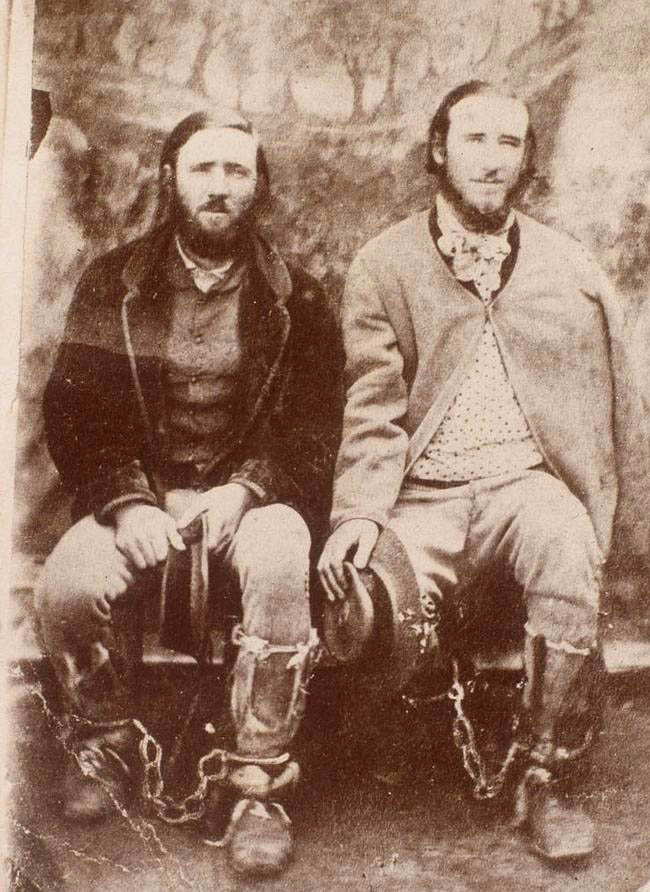
The Sydney Ducks wore duck trousers with cabbage tree hats and most had a swinging gait developed by years of wearing leg irons. Duck was a cheap canvas, it was a hard-wearing fabric used for clothing in Australia. Levi Strauss would use it for his riveted pants in 1873. The cabbage tree was a palm that grew at Sydney Cove and was used to make a distinctive straw hat.
They bore the scars of their hard years in the Penal system, a ring of scar tissue around each ankle and often wrists, the criss-cross pattern on their backs left by the cat o’nine tails, their gnarled, hardened hands, and some had been branded. They had been baked hard in the harsh Australian sun under the whips of cruel overseers and had weather-beaten faces, older than their years.
They had their slang, named ‘Flash Language’ and called themselves the ‘Sydney Coves.’ This was a play on the name of the original Sydney Cove, the small bay the city grew around, and ‘cove’ was slang for a fellow inmate. However, it was a foolhardy person who called a Sydney Cove a Sydney Duck to his face!
Sydney Town
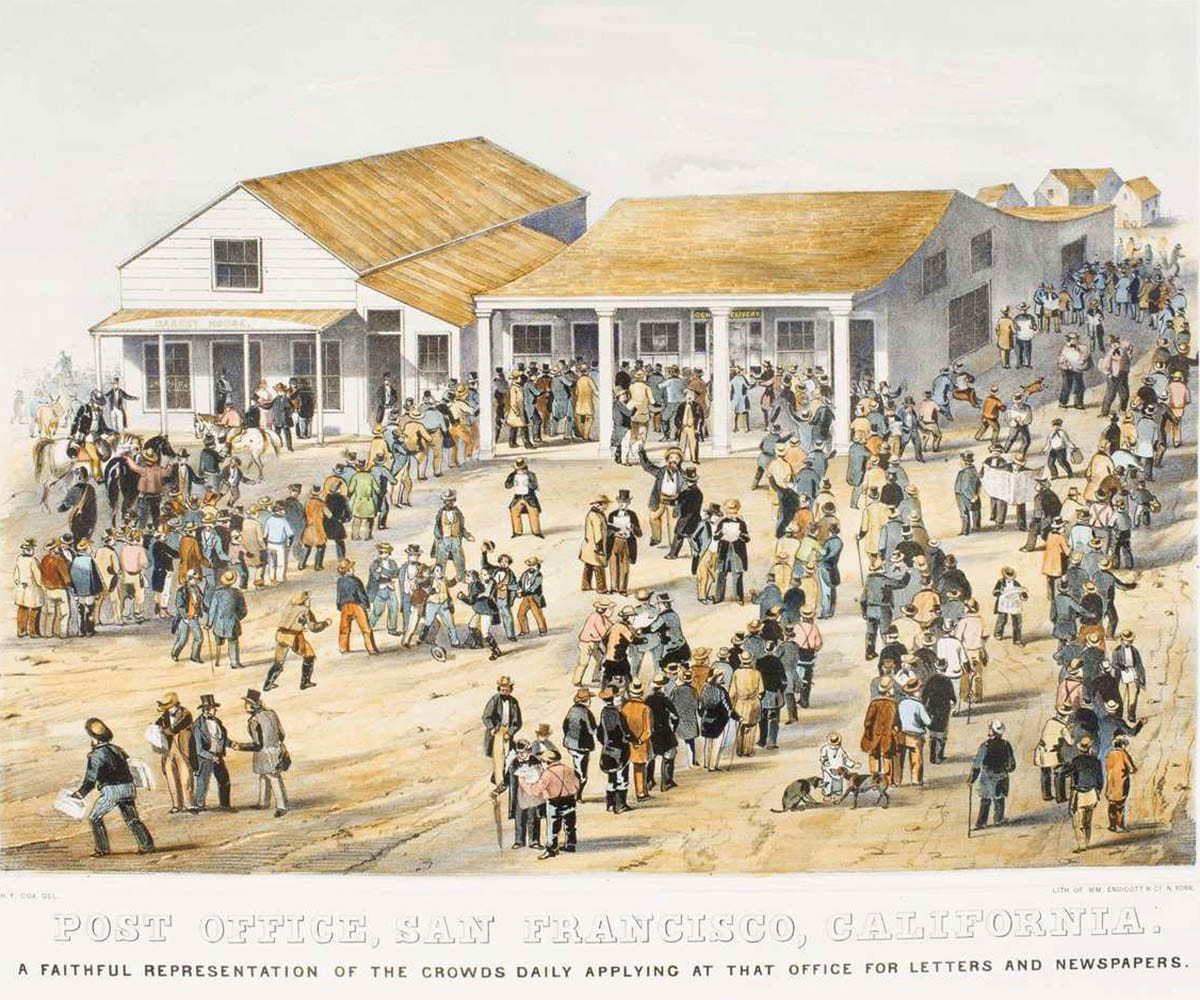
They congregated in their own shanty town called Sydney Town and occasionally Sydney Valley. They soon made their presence felt. Of the first 16 men arrested immediately after a huge fire, 12 were former convicts from Sydney. Eventually, 48 Sydney Ducks would be arrested for this fire.
Sydney Town was filled with ramshackle, hastily thrown up dwellings of canvas and timber. Even ships were used to house the boarding houses, brothels, and pubs found in Sydney Town. Remarkably, one of the California Gold Rush vessels still survives.
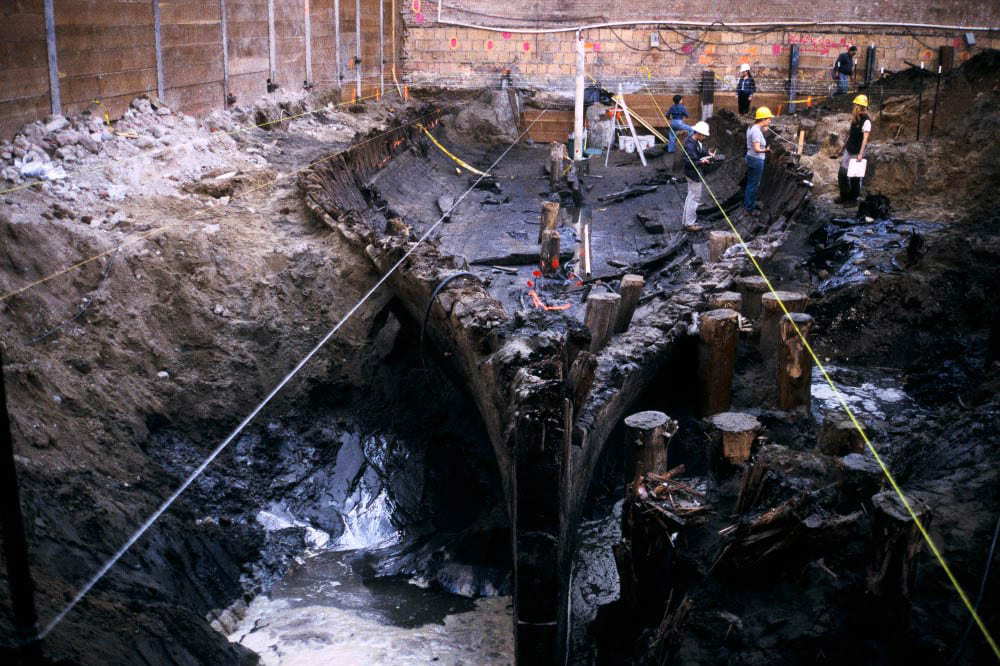
Joseph Anthony, a former convict who had served time in iron gangs, fled Sydney in 1849 soon after being found not guilty of Larceny. In San Francisco he opened the Old Ship Ale House in a ship hulk by simply running a ramp into a door he cut into the hull. The ship remains beneath today’s building, the Old Ship Saloon, and a bar on site has been serving drinks since Anthony hung his sign in 1851 advertising “Gud, bad and indif’rent spirits solds here! At 25 cents each.”
Criminal Activities of the Sydney Ducks

Australia, populated by convicts, had a notorious reputation, and Sydney was internationally infamous for preying on new arrivals. When the Sydney Ducks landed in San Francisco, they practiced the usual scams directed at relieving a newcomer of their money with offers of accommodation, meals, and sex. But these scams were small fry in the criminal activities of the Sydney Ducks.
They specialized in protection rackets, sex work, stand-over tactics, street, and highway robbery. They were hitmen, card sharps and gamblers, and arsonists. All had been brutalized by the British penal system.
They brought in shiploads of sex workers in 1851, causing a huge commotion in the bay when thousands of lonely miners fought amongst themselves to row to the ships. One of these ships, the Adirondack arrived on the 15th of July from Newcastle, Australia carrying 251 passengers in steerage, including 100 women. It has been claimed that in six months in 1851 over 2000 women arrived in San Francisco and all but 100 were sex workers.
The Sydney Town Pubs

Several former publicans made the trip from Sydney to San Francisco. After all, thirsty miners of the California Gold Rush were much more lucrative than the depressed and broke workers they had left behind.
The Bird-in-hand, the Jolly Waterman, The Boars Head, and the Tam O’Shanter were pubs with bad reputations in Sydney, Australia, and Sydney Town, California. These weren’t the jolly old English pubs that their names suggest. Murder, arson, and robbery were discussed openly and gangs put together.
Almost anything could be found in these pubs; weapons and drugs were among the offerings. The Boar’s Head, run by former convict George Haggerty, offered a show with a live boar for the right price. Many of the pubs had suggestive names that were a play on words.
They also specialized in coercing civilians into forced labor, selling crew to ship’s captains. It is said that many of the Sydney Town pubs had trapdoors in their floors for this purpose. So it was dangerous to wander into one of these pubs looking for a refreshing beverage or meal.
Mary Hogan, the Sydney Duck’s publican

San Francisco had some infamous women during the California Gold Rush. Ladies like Ah Toy and Cora Belle were joined by a Sydney Duck, Mary Anne Hogan. She was the lover of at least two of the most notorious of the Sydney Ducks and her pub in Sansome St was a known safe house. It may have been the notorious Goat & Compass which featured another former convict; ‘Dirty’ Tom McAlear who would eat or drink anything for money, including excreta.
Mary Hogan was dragged before the Committee of Vigilance in 1851 and forced to tell her story. She demonstrates the ease in which former convicts reinvented their pasts. She said that she went to Sydney when she was an infant with her parents from England. Mary Collier was a nurse girl from Bath who was 17 when she was sentenced to 7 years transportation for ‘man robbery’ in 1831. She married a fellow convict Michael Hogan in Bathurst, NSW in 1836.
The couple became publicans and in 1848 they had the Talbot Inn right in the heart of Sydney, Australia just a few blocks from the docks. They would have been among the first to hear the news of the California Gold Rush. Their tiny ramshackle establishment was never going to legally make them much money, but thirsty miners might.
San Francisco is Burning!

Arson was a specialty of the Sydney Ducks and this would eventually be their downfall. Former convicts had picked up enough fire behavior knowledge in the flammable Australian bush while working in iron gangs to be experts. They started fires when the wind was blowing away from Sydney Town towards the better parts of San Francisco so they could rob buildings during the commotion. They also ‘helped’ people remove their belongings from threatened buildings, scarpering with anything valuable.
In the two years between 1849 and 1851, there were seven major city fires in San Francisco causing millions of dollars in damage. The city had not had time to erect many brick or stone buildings and most were just wood or canvas. Some properties were old ship hulks pressed into service as warehouses. All were extremely flammable.
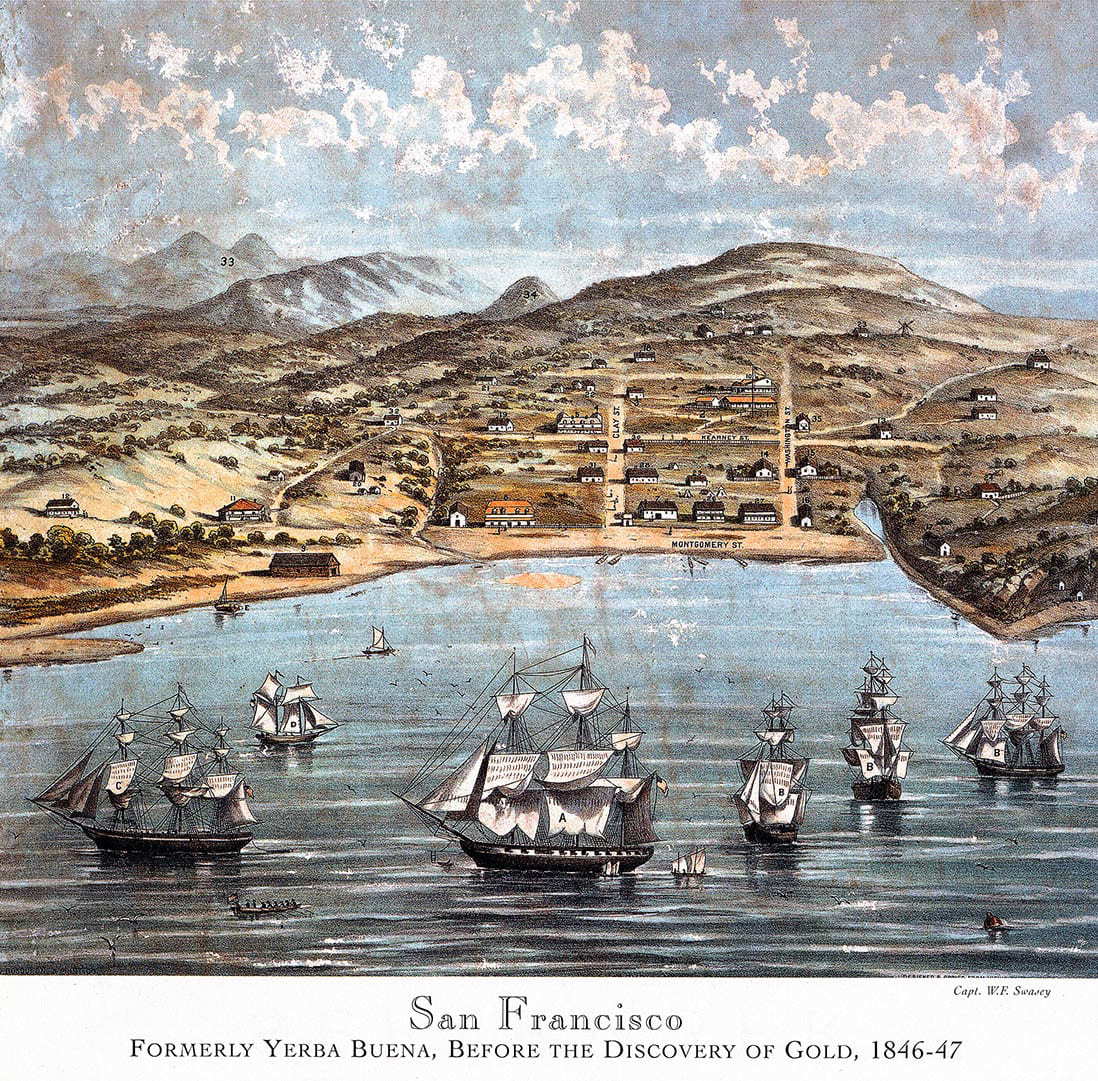
There were two significant fires in San Francisco in 1849, the first fire in January before the Sydney Ducks arrived. The second on the 24th December 1849 wiped out a huge area, devastating the most important part of the new city and causing over a million dollars’ worth of damage. It broke out in an upmarket salon that had refused to pay protection money to the Sydney Ducks and swept through the city. Of the 70 arrested for the fire, 48 were from Australia.
The next great fire, in May 1850 destroyed property estimated to be worth 4 million dollars. A year later another fire, the worst to date, destroyed around 2000 houses and 18 city blocks with a damage bill of 12 million dollars. As the city grew, so too did the danger of fire and the damage and utter terror it caused.
The Committee of Vigilance Goes After the Sydney Ducks
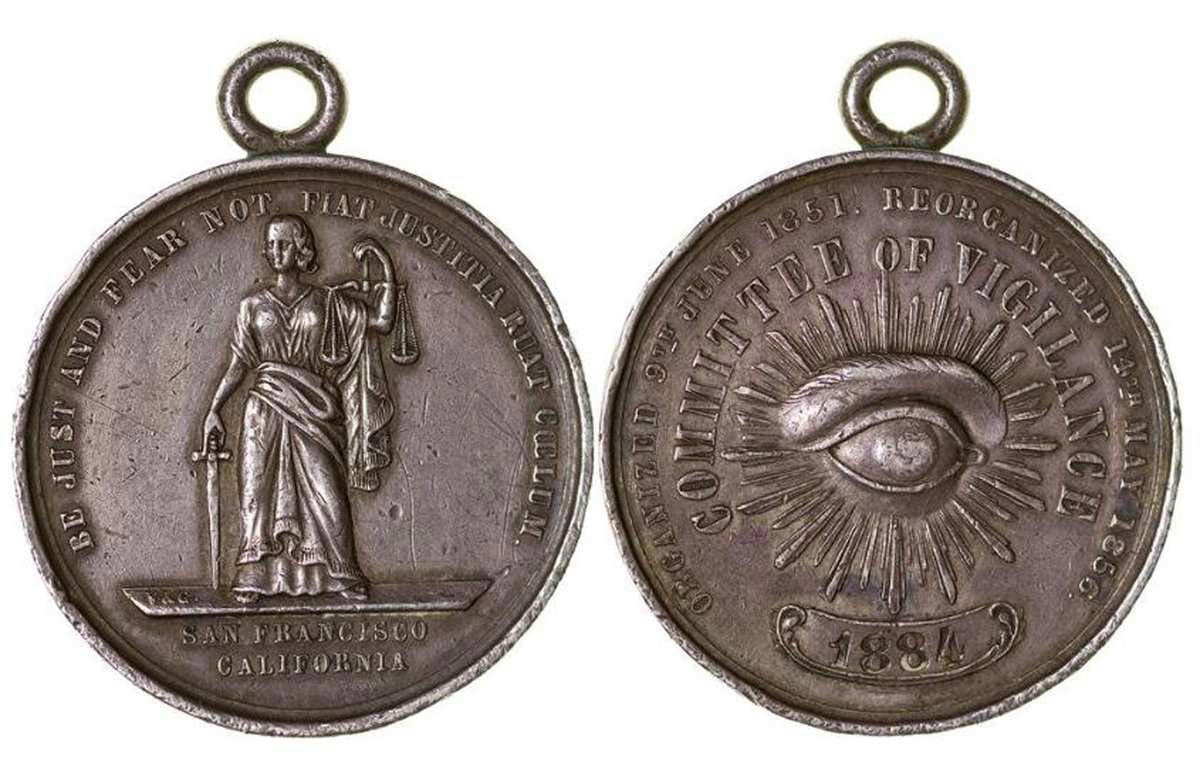
By mid-1851, the people of San Francisco had had enough. A letter appeared in the local newspaper the Alta on the 8th June 1851 proposing the formation of a ‘committee of safety’ to hunt down criminals and prevent them from entering the city. Another arson attempt had been discovered the day before and the author proclaimed:
“This could not possibly have been the result of an accident, and it is now rendered positive and beyond a doubt, that there is in this city an organized band of villains who are determined to destroy the city. We are standing as it were upon a mine that any moment may explode, scattering death and destruction.”
The Committee of Vigilance was formed immediately and showed they would carry through on their principles just a few days later.
California Gold Rush & The Committee of Vigilance

They hanged John Jenkins on the 10th of June after catching him red-handed with a stolen safe. On the 11th of July, they hanged James Stuart for murder and in August hanged two men, Samuel Whittaker and Robert Mackenzie or McKinley on the 24th of August in a double execution for ‘various heinous crimes.’
James Stuart, known as Long Jim, English Jim, or alias William Stevens was one of the leaders of the Sydney Ducks. However, when the pressure was applied by the Vigilantes he lagged on his former associates, including Whittaker and McKinley. Both Stuart and Whittaker were the lovers of Mary Hogan.
All four men were former convicts and not one of them told the truth about their past. Mackenzie (or McKinley) claimed he came to the USA as a child with his parents, when in fact was transported when he was only 11 years old. He had never escaped the system in Australia, so he escaped to San Francisco swapping the cat-o’-nine and leg irons for the vigilante’s noose.
The Committee of Vigilance flogged a man, deported 14 to Australia, warned another 14 to get out of town, and handed 15 more to real law enforcement authorities. The majority were Sydney Ducks.
The Vigilantes were effective, the crime rate in 1852 dropped dramatically and the committee disbanded. So too did the Sydney Ducks with many of them leaving the city for good.
Gold had also been discovered in New South Wales in 1852 by a former miner who tried his luck and failed in the California Gold Rush. Many returned to Australia with the skills picked up in the first years of the California Gold Rush. The Sydney Ducks flew south never to return and Sydney Town became the Barbary Coast red-light district of San Francisco.





